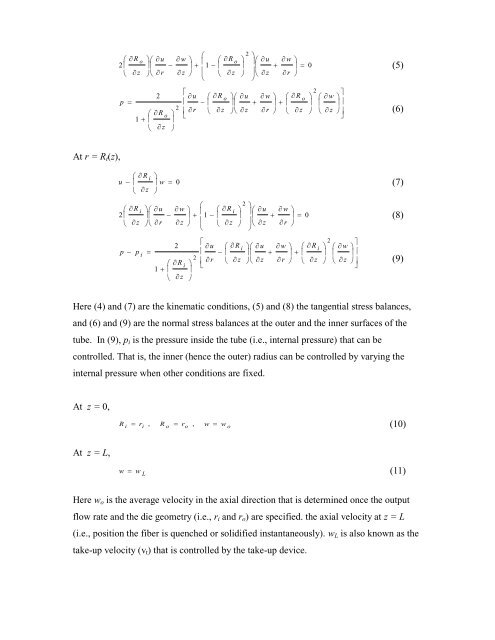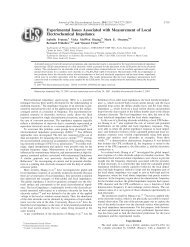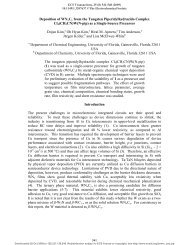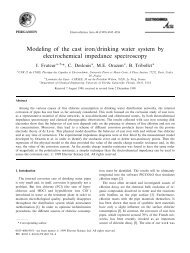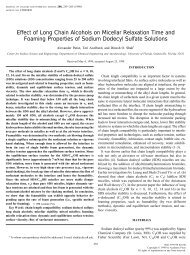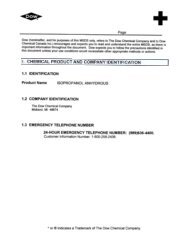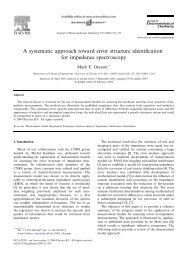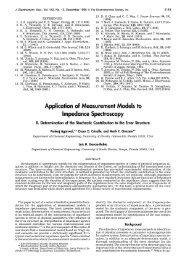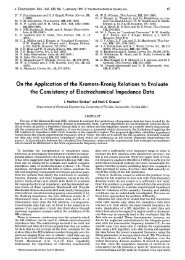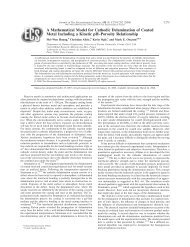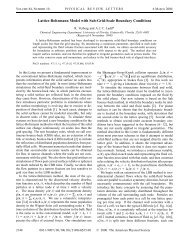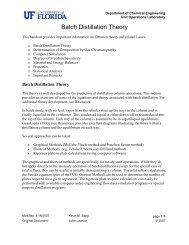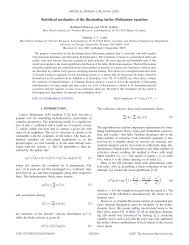Extrusion Introduction An extruder is a common machine in industry ...
Extrusion Introduction An extruder is a common machine in industry ...
Extrusion Introduction An extruder is a common machine in industry ...
Create successful ePaper yourself
Turn your PDF publications into a flip-book with our unique Google optimized e-Paper software.
R o<br />
2 <br />
z<br />
p<br />
<br />
1 <br />
<br />
u<br />
<br />
<br />
<br />
r<br />
<br />
<br />
<br />
2<br />
R o<br />
z<br />
w<br />
z<br />
<br />
<br />
<br />
<br />
<br />
<br />
1 <br />
<br />
<br />
<br />
u<br />
<br />
2<br />
r<br />
<br />
<br />
<br />
<br />
<br />
<br />
<br />
<br />
<br />
2<br />
R<br />
<br />
o <br />
u<br />
<br />
z <br />
<br />
z<br />
<br />
R o <br />
u<br />
<br />
<br />
z <br />
z<br />
w<br />
r<br />
<br />
<br />
<br />
w<br />
<br />
r<br />
<br />
<br />
<br />
<br />
<br />
<br />
R o<br />
z<br />
0<br />
2<br />
<br />
<br />
<br />
<br />
w <br />
<br />
z <br />
<br />
(5)<br />
(6)<br />
At r = R i (z),<br />
u <br />
<br />
<br />
<br />
R i<br />
2 <br />
z<br />
p p i<br />
R i<br />
z<br />
<br />
<br />
<br />
w<br />
<br />
<br />
u<br />
<br />
<br />
<br />
r<br />
<br />
1 <br />
<br />
<br />
<br />
0<br />
w<br />
z<br />
2<br />
R i<br />
z<br />
<br />
<br />
<br />
<br />
<br />
<br />
1 <br />
<br />
<br />
<br />
<br />
<br />
<br />
u<br />
<br />
2<br />
r<br />
<br />
<br />
<br />
2<br />
R<br />
<br />
i <br />
u<br />
<br />
z <br />
<br />
z<br />
<br />
<br />
<br />
<br />
R i <br />
u<br />
<br />
<br />
z <br />
z<br />
w<br />
r<br />
w<br />
r<br />
<br />
<br />
<br />
<br />
<br />
<br />
<br />
<br />
<br />
<br />
<br />
0<br />
R i<br />
z<br />
2<br />
<br />
<br />
<br />
<br />
w <br />
<br />
z <br />
<br />
(7)<br />
(8)<br />
(9)<br />
Here (4) and (7) are the k<strong>in</strong>ematic conditions, (5) and (8) the tangential stress balances,<br />
and (6) and (9) are the normal stress balances at the outer and the <strong>in</strong>ner surfaces of the<br />
tube. In (9), p i <strong>is</strong> the pressure <strong>in</strong>side the tube (i.e., <strong>in</strong>ternal pressure) that can be<br />
controlled. That <strong>is</strong>, the <strong>in</strong>ner (hence the outer) radius can be controlled by vary<strong>in</strong>g the<br />
<strong>in</strong>ternal pressure when other conditions are fixed.<br />
At z = 0,<br />
R i<br />
ri<br />
, R o ro<br />
, w w o<br />
(10)<br />
At z = L,<br />
w w L<br />
(11)<br />
Here w o <strong>is</strong> the average velocity <strong>in</strong> the axial direction that <strong>is</strong> determ<strong>in</strong>ed once the output<br />
flow rate and the die geometry (i.e., r i and r o ) are specified. the axial velocity at z = L<br />
(i.e., position the fiber <strong>is</strong> quenched or solidified <strong>in</strong>stantaneously). w L <strong>is</strong> also known as the<br />
take-up velocity (v t ) that <strong>is</strong> controlled by the take-up device.


